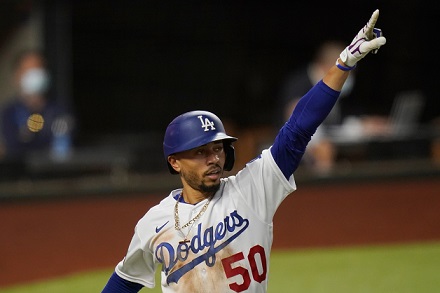So, my partner retains asking me all about totally different stats when watching our sons play. What’s OPS in baseball? How do slugging and on-base percentages get calculated? We get into these stats extra of from the MLB perspective for you and extra. There are much more superior stats right now like WAR (wins above substitute) that appear to get talked extra about than a participant hitting over .300.
Equally, we see a number of chatter in regards to the newish defensive stats like outs above common and changed by defensive runs. OPS has been round for some time, so we’ll get into that first for you as we get into baseball stats defined.
What’s OPS in Baseball?
So, if you wish to know what’s OPS in baseball, step one is determining what OPS means. It stands for on-base share plus slugging share. You simply add the 2 stats collectively to get the OPS. This provides you the worth of how typically a participant will get on base whereas quantifying the manufacturing of their hits. Word, this offers larger weight to further base hits over somebody who solely hits singles (or a majority of singles). For instance, if I’ve 10 doubles and you’ve got 10 singles in the identical variety of a bats, OPS will fee me greater since I’ll have the next slugging share.
How Does Slugging Proportion Get Calculated?
So, now, what’s slugging share? It’s in all probability the marginally extra difficult stat to calculate for the OPS metric. Slugging share takes under consideration the participant’s whole bases. It doesn’t embody walks, hit-by-pitches, fielder’s decisions, and so on. It solely makes use of hits. That’s why you see TB (whole bases) on field scores in apps like Sport Changer for highschool and journey baseball.
If you calculate slugging share, the variety of bases on the hit are the quantity that you just use. So a house run is 4, a single is one. You add up the entire bases (the entire base metric). Then, you divide by the entire variety of at bats. Do not include HBP or walks within the calculation. Slugging share is an effective method to consider how a lot energy a participant brings to the desk. It additionally helps in case you are a coach set your batting order.
What’s On-Base Proportion in Baseball?
Now, how will we calculate on-base share? First, On-base share (OBA) is the baseball statistic that tells us how a lot a participant will get on base per at-bat. They don’t get credit score for a fielder’s selection, dropped third strike, or reaching base on a fielding error. You do get credit score for getting hit by the pitch and strolling. To calculate on-base share you add up the variety of hits, walks, and HBP’s and divide by the entire at-bats (walks and HBP rely on this quantity the place they don’t for batting common and slugging share). This provides you the OBP.
How do You Know What a Good OPS is?
It is dependent upon the extent of play. If we’re taking a look at MLB gamers, the common OPS bounces between .700 and .750 each season. In case you see an expert participant with an OPS above .800 which means they’re a very good hitter. An OPS of 1.000 is off-the-charts. Within the 2023 MLB season, Dodgers star, Mookie Betts had an OPS of 1.068 which was ridiculously excessive for that degree of play.
In most MLB playoff series, you’ll see the OPS of gamers are likely to development under the common season (not the entire time). That is from seeing higher-end pitching and the comparatively small numbers over a 3 to seven recreation collection. Additionally, you will see variation between place gamers (catchers are likely to have a decrease OPS than different place gamers).
